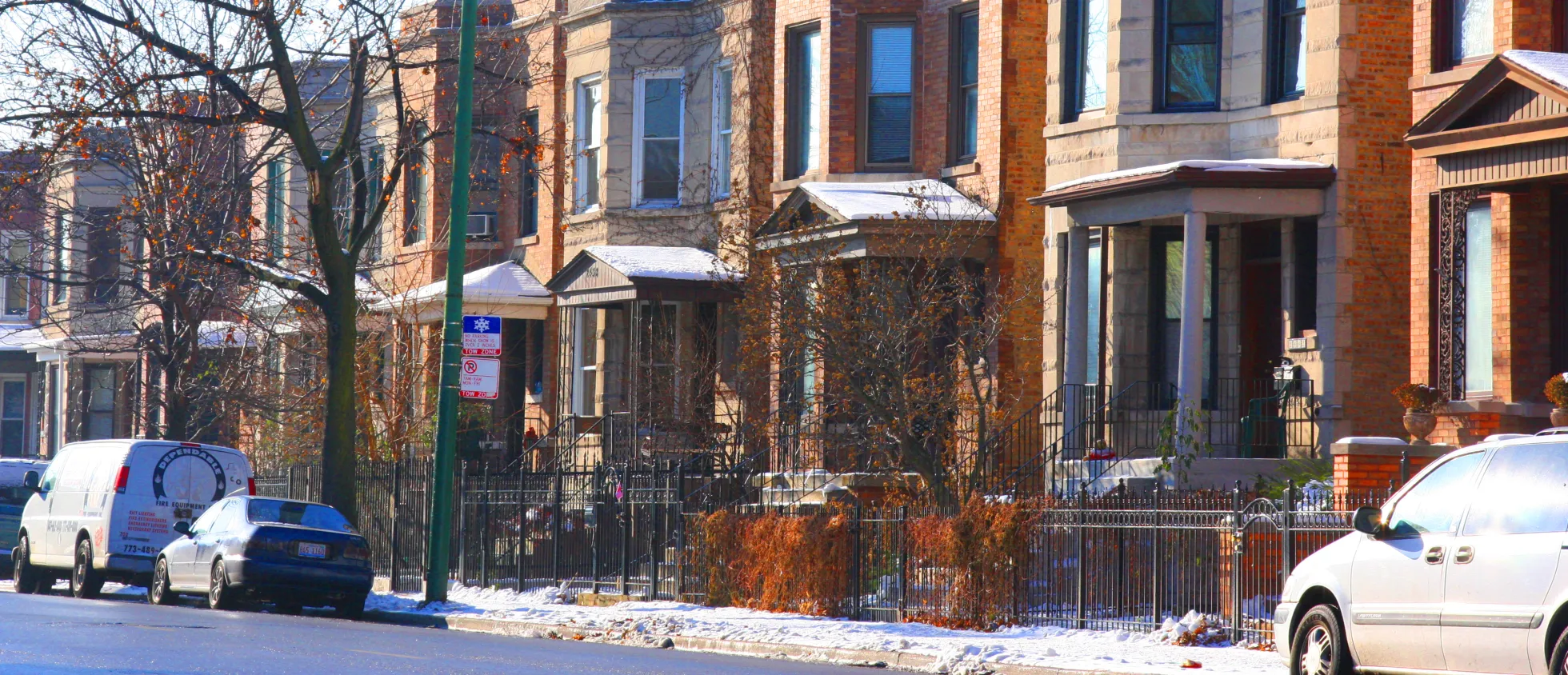For landlords facing winter vacancies in 2025, when leasing activity across Chicago traditionally slows, net-effective rent can be the key to filling units quickly, maintaining occupancy, and locking in stable rental income.
Even with low vacancy rates and limited new supply citywide, leasing momentum dips during the colder months as renters postpone moves until spring. Offering short-term incentives, such as one month free, helps landlords stand out and secure tenants before the new year rush.
What Is Net-Effective Rent?
Net-effective rent averages the total cost of rent over the lease term, factoring in any free rent offered as an incentive. For instance, if you provide one month of free rent on a 12-month lease, the "net-effective rent" reflects that free month spread across the lease’s duration. Importantly, this differs from the actual monthly rent a tenant pays once the free month is used.
Tip: At Domu, we recommend landlords clearly disclose both the net-effective rent and the actual monthly rent to build trust with potential tenants. Transparency not only avoids confusion but also helps your property stand out in Chicago’s competitive rental market.
How Chicago Landlords Can Calculate Net-Effective Rent in 2025
Understanding net-effective rent helps landlords price units competitively, reduce vacancy loss, and make smarter decisions about concessions. Here’s how to calculate it using a simple example of a Lakeview studio priced at $1,000/month.
- Determine the Value of Free Rent: Start with the total value of the free rent (1 month's worth) offered.
- Example: 1 month = $1,000.
- Divide by the Number of Months in the Lease: Subtract the free month from the lease term (e.g., 12 months - 1 month = 11 paid months). Divide the free rent value by this number:
- Example: $1,000 / 12 months = $83.33
- Adjust the Monthly Rent: Subtract the free rent credit from the monthly rent.
- Example: $1,000 - $83.33 = $916.67 net-effective rent
Real-Life Comparison: Net-Effective Rent vs. No Incentives
Knowing how to calculate net-effective rent is only half the strategy — understanding its impact on your bottom line is where it really pays off.
Scenario 1: Offering a Net-Effective Incentive
- Property Details: A Lakeview studio apartment listed for $1000/month.
- Concession: 1 month free on a 12-month lease
- Net-Effective Rent: $916.67/month
- Total Net-Effective Rent Income: $916.67 × 12 = $11,000
- Vacancy Duration: 2 weeks before signing a lease.
- Lost Income Due to Vacancy: $500 (half of one month's rent).
- Net Income After Vacancy Loss: $11,000 - $500 = $10,500
- Why This Works: You attract strong interest, sign a renter fast, and avoid losing income to long vacancy or broker fees.
Scenario 2: No Incentive, Longer Vacancy
- Property Details: The same Lakeview studio apartment listed for $1000/month without any incentives.
- Concession: None.
- Total Income Before Vacancy Loss: $1,000 × 12 = $12,000
- Vacancy Duration: 10 weeks before signing a lease (landlord loses two and a half months of income while waiting for a tenant to pay full price).
- Lost Income Due to Vacancy: $2,500 (two plus months of rent).
- Net Income After Vacancy Loss: $12,000 – $2,500 = $9,500
- Why This Backfires: Holding firm at full price often leads to extended vacancy in a softer market — which costs far more than offering a month free.
Overall Conclusion
The landlord offering net-effective rent secured a long-term tenant faster and ultimately earned $1,000 more in net income than the landlord who waited for a full-price renter. Even though both scenarios show the same potential income before vacancy ($12,000), the landlord in Scenario 2 lost $2,500 to extended vacancy, compared to only $500 in Scenario 1 — a $2,000 difference in vacancy loss, resulting in $10,500 vs. $9,500 in final income.
By listing with net-effective rent, landlords reduce vacancy losses, attract renters more quickly, and maintain stronger cash flow without sacrificing overall revenue.
When to Use Net-Effective Rent
-
To Fill Winter Vacancies: Fewer renters search during Chicago’s colder months. Offering a concession helps your listing stand out.
-
When Competing with Nearby Listings: While inventory is limited, some downtown and luxury buildings offer winter move-in deals. Matching incentives keeps you competitive without cutting rent.
-
For Longer Lease Terms: Encourage tenants to sign 12- or 18-month leases with upfront savings to reduce turnover and ensure steady occupancy through 2026.
Why This Strategy Works for Chicago Landlords This Winter
Think like a smart landlord: cash flow is king. A month (or more) of vacancy can cost thousands, and net-effective rent helps fill units faster without lowering your true price. In a low-vacancy market like Chicago’s, this strategy isn’t about discounting — it’s about accelerating leasing velocity during slower months and keeping your buildings full.
By locking in tenants now, you minimize downtime and enter spring with steady occupancy. Tenants who benefit from an initial concession are also more likely to renew, viewing a modest increase as reasonable compared to moving and paying full market rent elsewhere.
Ready to stay ahead of Chicago’s winter leasing curve? Visit Domu’s Landlord Resources for more strategies to keep your properties occupied and profitable year-round.






